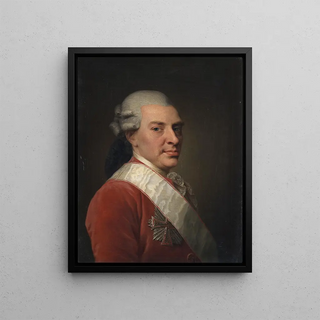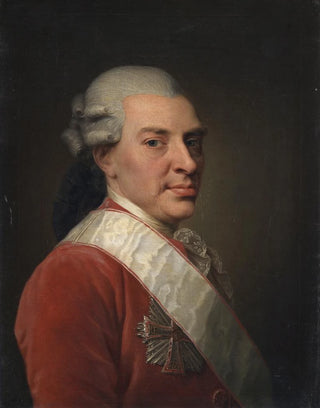Art print | Secret Earth Henrik Hielmstierne - Jens Juel


View from behind

Frame (optional)
In the fascinating world of art, some works manage to capture the very essence of humanity while evoking rich and complex inner landscapes. "Secret Land Henrik Hielmstierne - Jens Juel" is a compelling example. This piece transcends the simple framework of a visual representation to immerse the viewer in deep introspection. Through delicate nuances and thoughtful composition, the artist succeeds in creating a dialogue between the visible and the invisible, inviting each person to explore the twists and turns of their own mind. Contemplating this work, one immediately feels a call to self-discovery and escape to unknown territories.
Style and uniqueness of the work
Jens Juel's style is characterized by an exceptional mastery of light and color, which give his compositions a unique atmosphere. In "Secret Land," the chosen hues seem to vibrate with a life of their own, oscillating between softness and depth. The forms, although figurative, blend with subtle abstraction, allowing the piece to transcend its initial subject. This blend of realism and imagination creates an immersive visual experience, where every detail matters. The way Juel plays with shadows and lights gives rise to a depth that invites contemplation. Each glance at this work reveals new facets, as if it had the power to reinvent itself at every moment.
The artist and his influence
Jens Juel, an emblematic figure of 18th-century Danish painting, knew how to mark his era with his innovative approach and artistic sensitivity. His work stands out for his ability to capture not only the outward appearance of his subjects but also their inner essence. Influenced by the artistic currents of his time, Juel managed to incorporate elements of neoclassicism while maintaining a personal touch that is uniquely his own. His impact on his contemporaries and future generations is undeniable. By redefining portraiture codes and exploring more introspective themes, he paved the way for a new understanding of art, where emotion and psychology of characters take precedence over simple representation.

Matte finish

View from behind

Frame (optional)
In the fascinating world of art, some works manage to capture the very essence of humanity while evoking rich and complex inner landscapes. "Secret Land Henrik Hielmstierne - Jens Juel" is a compelling example. This piece transcends the simple framework of a visual representation to immerse the viewer in deep introspection. Through delicate nuances and thoughtful composition, the artist succeeds in creating a dialogue between the visible and the invisible, inviting each person to explore the twists and turns of their own mind. Contemplating this work, one immediately feels a call to self-discovery and escape to unknown territories.
Style and uniqueness of the work
Jens Juel's style is characterized by an exceptional mastery of light and color, which give his compositions a unique atmosphere. In "Secret Land," the chosen hues seem to vibrate with a life of their own, oscillating between softness and depth. The forms, although figurative, blend with subtle abstraction, allowing the piece to transcend its initial subject. This blend of realism and imagination creates an immersive visual experience, where every detail matters. The way Juel plays with shadows and lights gives rise to a depth that invites contemplation. Each glance at this work reveals new facets, as if it had the power to reinvent itself at every moment.
The artist and his influence
Jens Juel, an emblematic figure of 18th-century Danish painting, knew how to mark his era with his innovative approach and artistic sensitivity. His work stands out for his ability to capture not only the outward appearance of his subjects but also their inner essence. Influenced by the artistic currents of his time, Juel managed to incorporate elements of neoclassicism while maintaining a personal touch that is uniquely his own. His impact on his contemporaries and future generations is undeniable. By redefining portraiture codes and exploring more introspective themes, he paved the way for a new understanding of art, where emotion and psychology of characters take precedence over simple representation.






